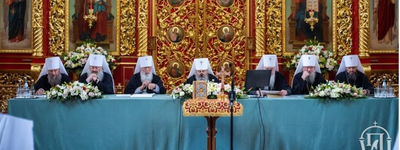Architectural Restoration: Blueprint for Orthodox-Catholic Harmony?
Ukrainian Greek-Catholics (Uniates) and Orthodox have been fighting since the 1596 Union of Brest. With the revival of the Greek-Catholic Church in the late 1980s and 1990s, disputes over church property erupted throughout western Ukraine. Today, the old rivalry has been complicated by the emergence of two major Orthodox Churches: the Ukrainian Orthodox Church under the Moscow Patriarchate, and the Orthodox Church of Ukraine under the Ecumenical Patriarchate of Constantinople. While Catholic-Orthodox conflicts have abated, reunification is still a far-off dream.
The theological differences between Catholics and Orthodox are not as great or irresoluble as many think. Although Greek-Catholic ritual has been influenced over the centuries by Latin-rite Catholicism, the Ukrainian Orthodox and Greek-Catholic Churches share the same Kyivan Byzantine rite. The practical obstacles to unity, however, are formidable. Even if one imagines unity as simply sharing in the Communion cup, rather than an institutional consolidation, resistance is considerable.
There are, nevertheless, areas in which Ukrainian Orthodox and Catholics can build trust, cultivate tolerance, and gradually work towards the unity that Christ Himself enjoins. One such area is the restoration of churches. This is particularly appropriate in places where an Orthodox and a Catholic parish share a single church.
Many churches in Ukraine are in dire need of restoration. Wooden churches in particular are prone to decay, deterioration, and damage from the elements. All too often, restoration has been done poorly and unprofessionally, using shoddy or inappropriate materials, without care for the original design. In some cases, priceless artwork has been damaged or even destroyed.
In recent years, the US-based Foundation To Preserve Ukraine’s Sacral Arts (FTPUSA) has worked with restoration specialists and local communities in western Ukraine to help repair and restore historic churches. For example, FTPUSA has worked with the community in Polyana (Zolochiv district, Lviv region), where a 1902 church designed by Vasyl Nahirny (1847-1921) contains frescoes by the Neo-Byzantinist painter Modest Sosenko (1847-1921). It has also contributed to the restoration of a bell tower in Zhyrivka (Pustomyty district, Lviv region), repaired shingles at a 1702 church in Vovkiv (Pustomyty district, Lviv region) and a church dating from 1670 in Staryi Yar (Yavoriv district, Lviv region), and restored an iconostasis in the village church of Velyka Bilyna (Sambir district, Lviv region) built in 1829-1830. The projects are directed by Natalia Filevych of Lviv, in cooperation with the Lviv Polytechnic University. One condition of FTPUSA’s assistance is that the local community fund at least 50 percent of the restoration.
In one remarkable case, FTPUSA has undertaken restoration in collaboration with both an Orthodox and a Greek-Catholic community. The church of St. Nicholas in the village of Liubelia in the Zhovkva district of the Lviv oblast is shared by members of the Orthodox Church of Ukraine and the Ukrainian Greek-Catholic Church. The village of Liubelia was first mentioned in the historical sources in 1649 in connection with the Khmelnytsky uprising. Its first parish church, built in 1767, burned in 1831. It was replaced by a new church in 1841, which was restored in 1880. Renovation was conducted in 1934-1936 by Ievhen Nahirny, son of the architect Vasyl Nahirny. The traditional tripartite church was enlarged to a cruciform neo-Baroque church. Interior painting was executed in 1972 by Ivan Adams’kyi. FTPUSA is conducting restoration together with the two religious communities.
The reunion of Ukraine’s Orthodox and Catholics may still be far away. It will take time and effort to resolve theological differences, ritual divergences, and especially institutional barriers. But practical cooperation among the faithful in concrete undertakings like church restoration can happen today. The example of Liubelia is convincing proof.










